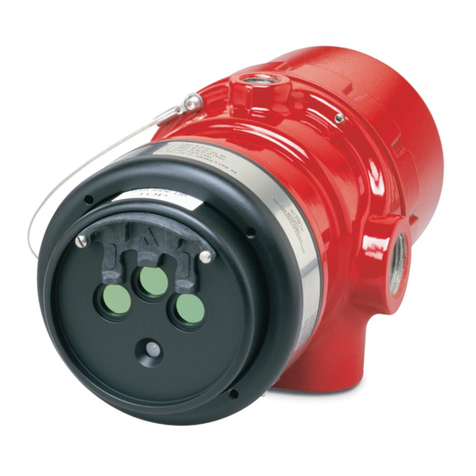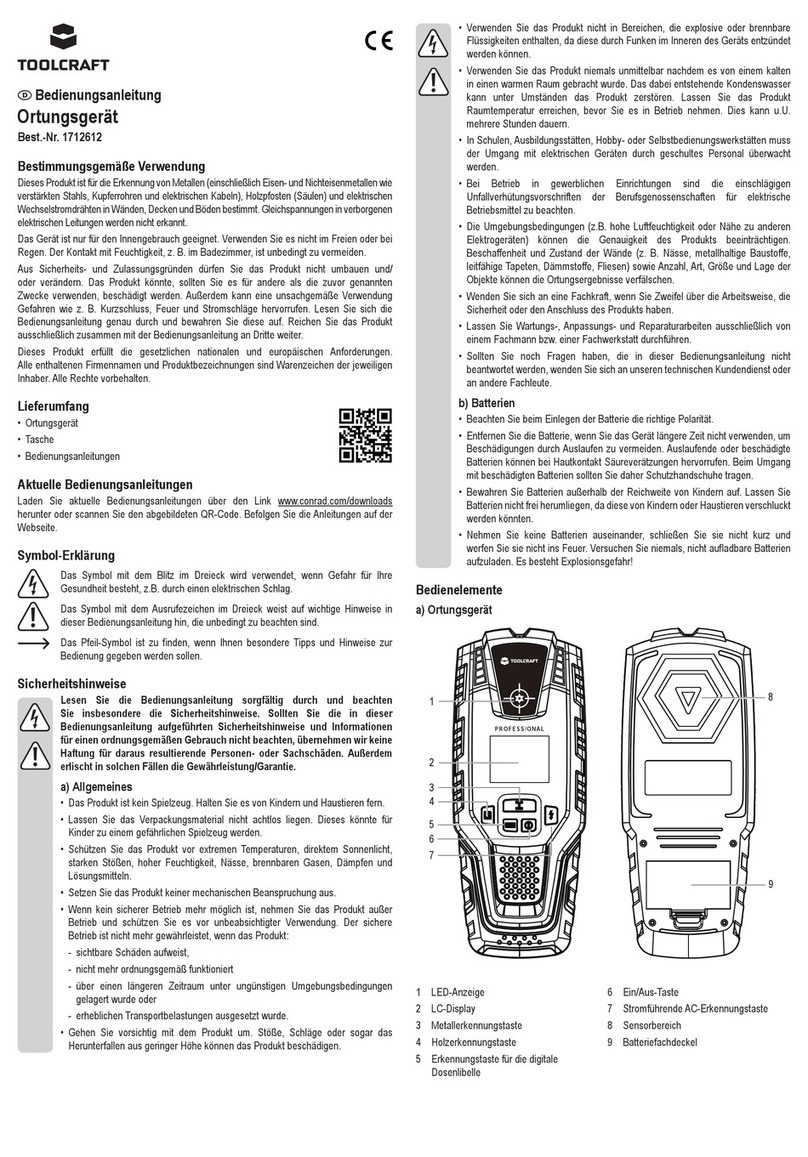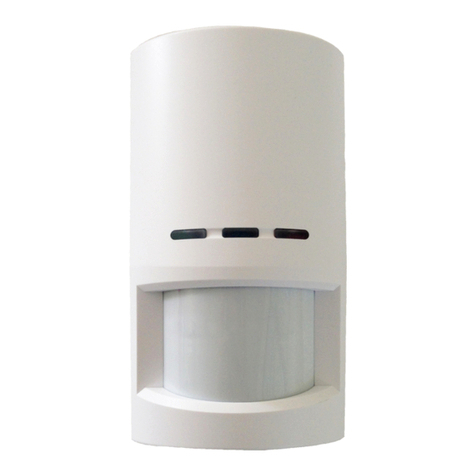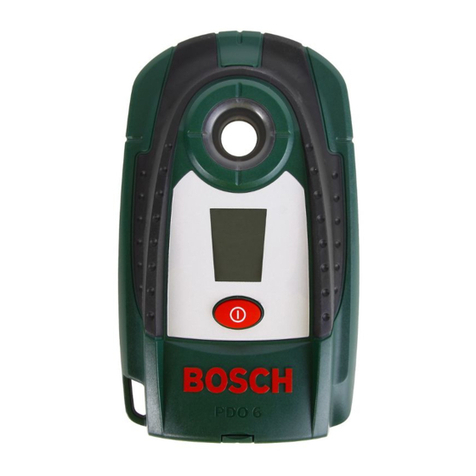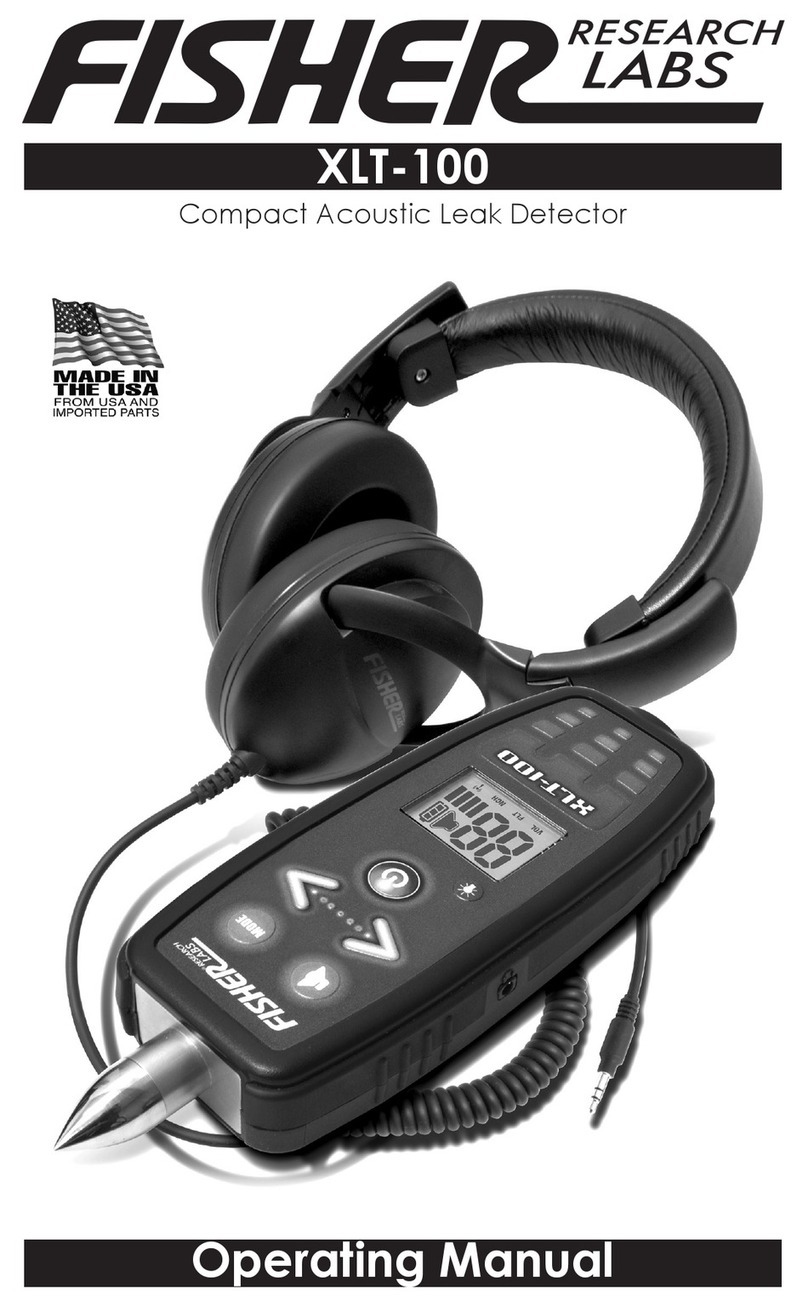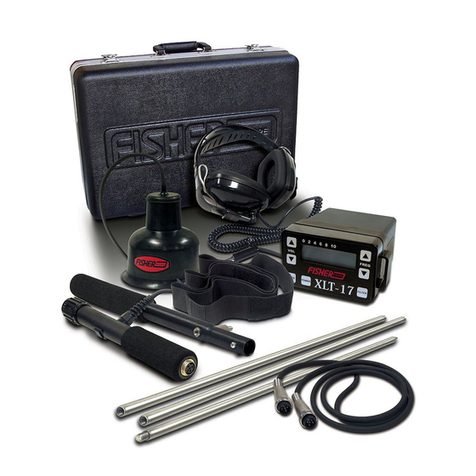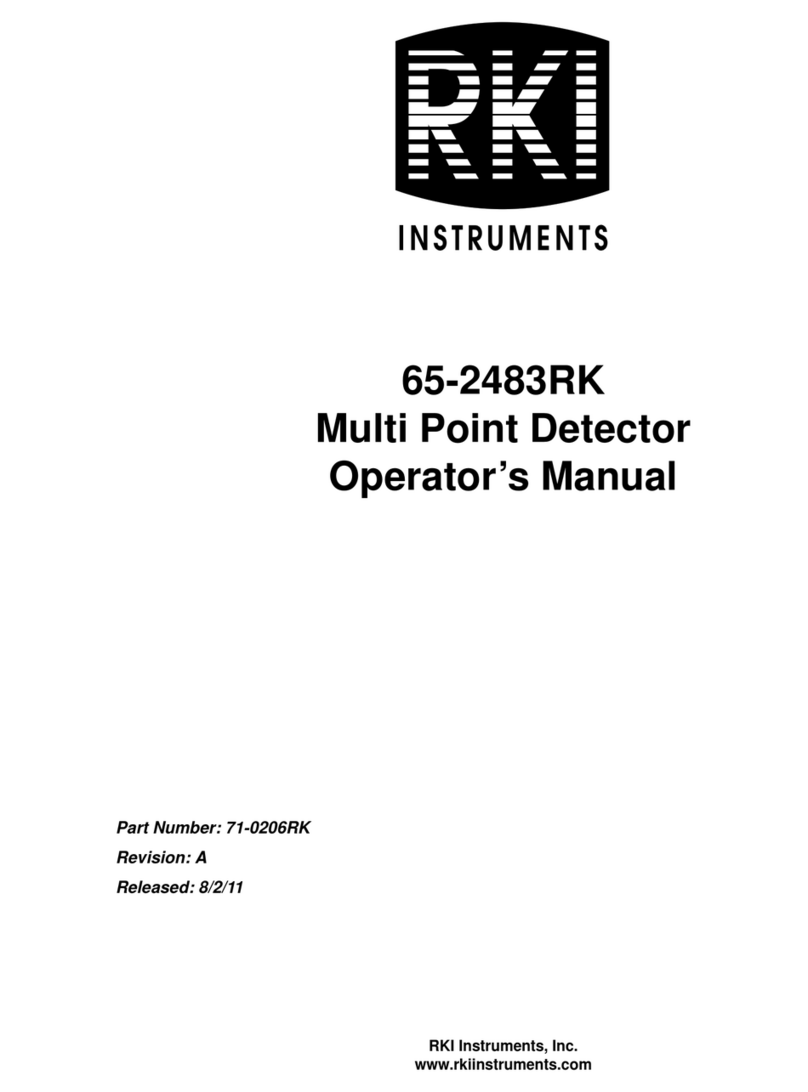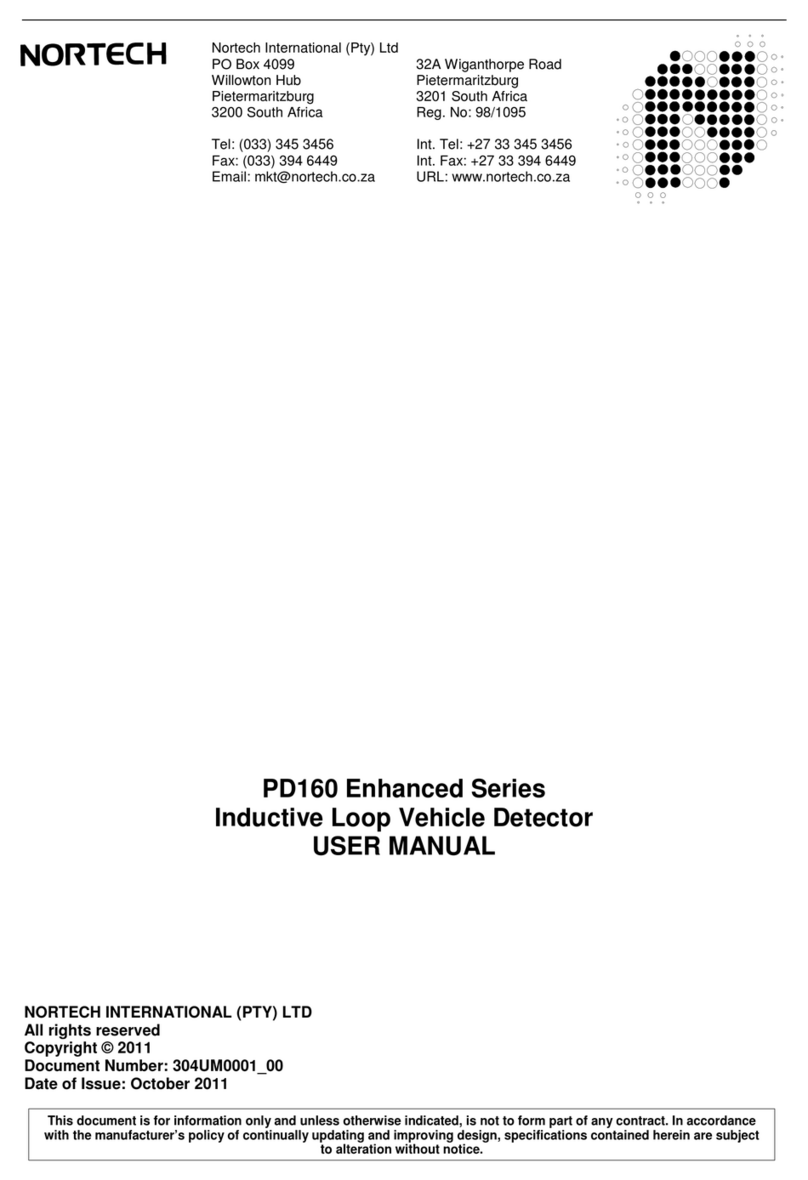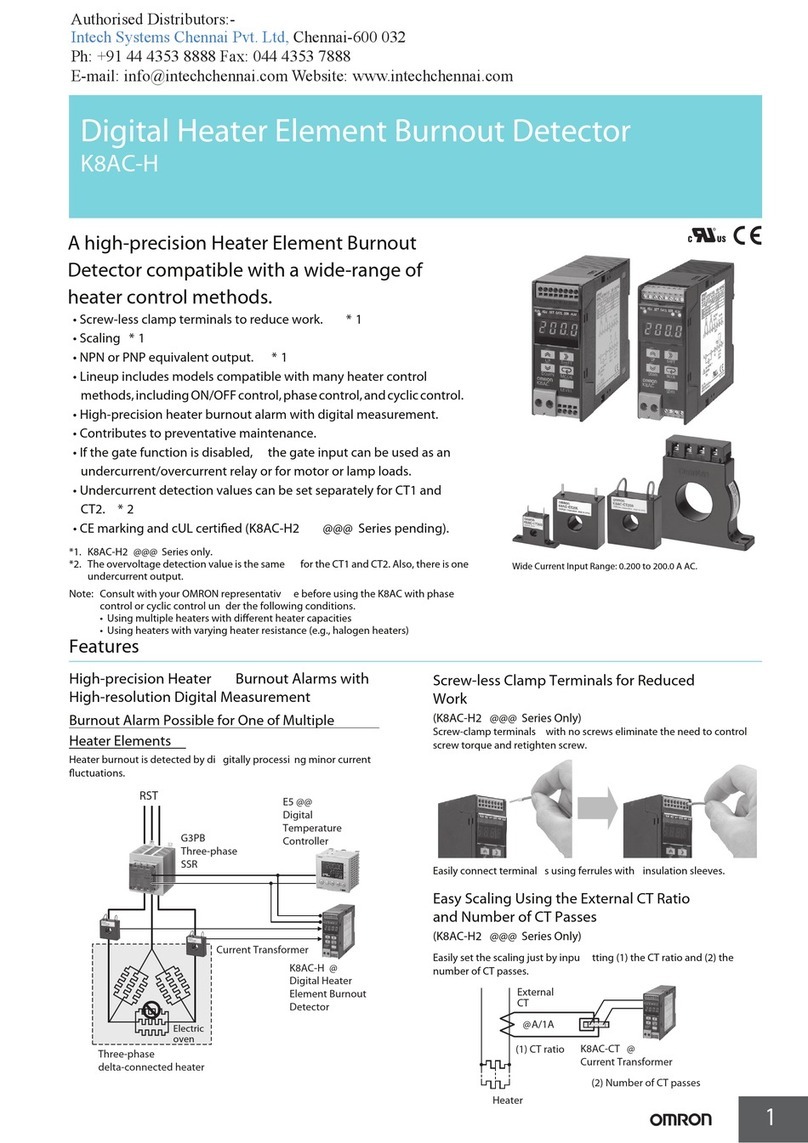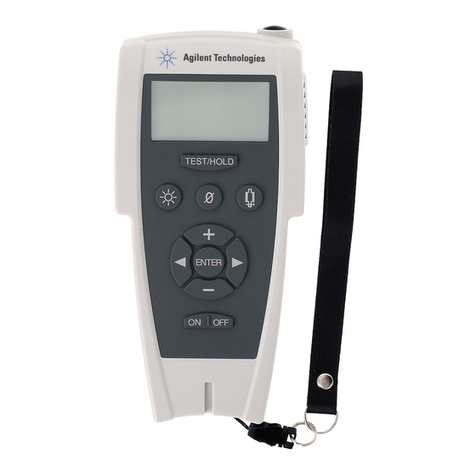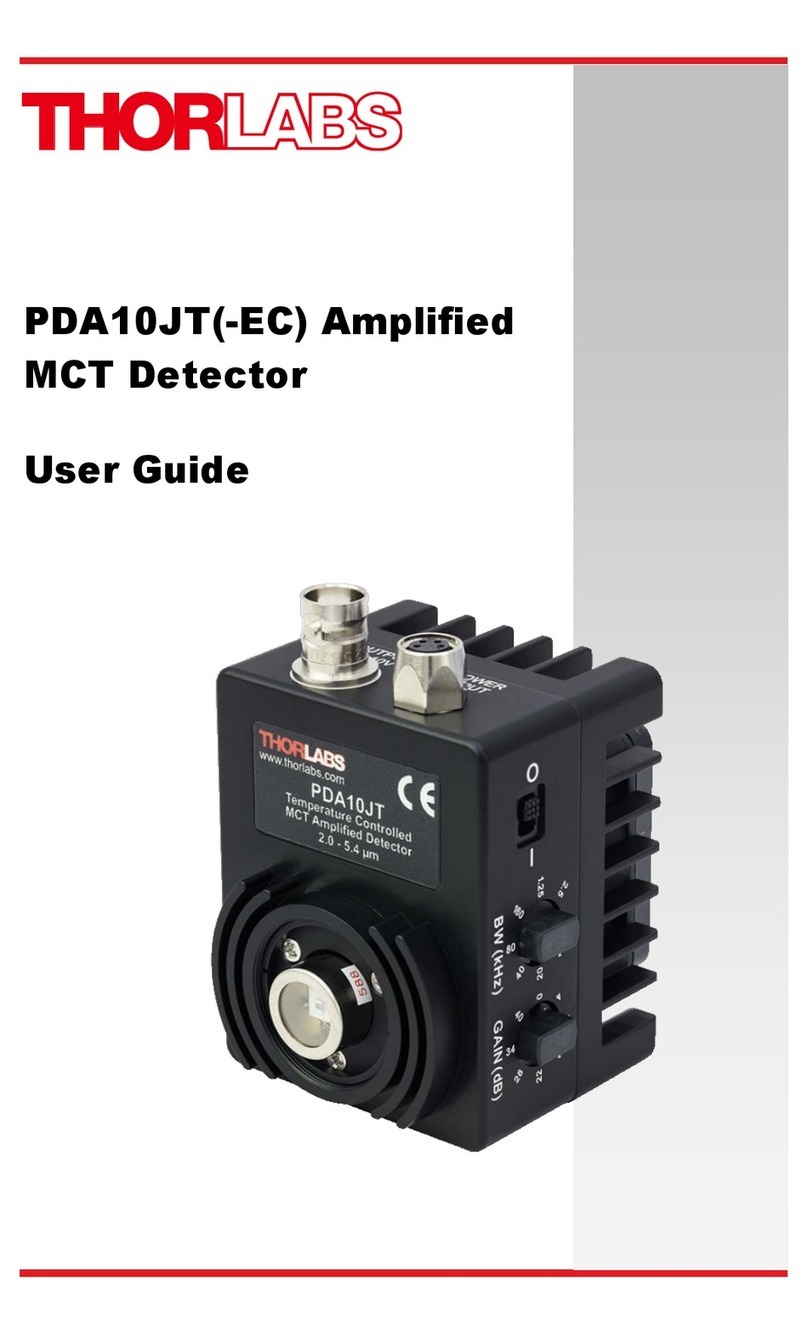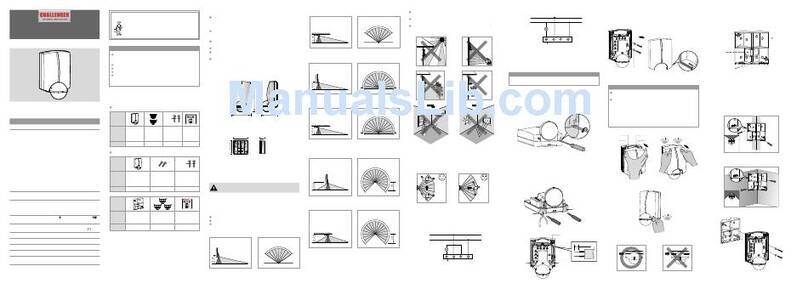
1. Control Box
All listening and ltering controls for the XLT-30 are contained in this sturdy
housing. Thefunction ofeach control is described in the section entitled
“Faceplate and Controls”.
2. Big Foot Sensor - OPTION A
Also known as the Ground Microphone, this sensor is to be used on hard
surfaces, concrete, asphalt, tile, etc. A fl exible rubber shield helps pre-
ventoutsidesoundsfrominterferingwiththesoundsfromtheburiedpipe.
Press and hold the red button near the handle to mute the audio from
the probe and suppress loud sounds when the probe is moved.
2A. Little Foot Assembly - OPTION C
About the size of a computer mouse, this small handheld sensor is de-
signed for areas that the Big Foot Sensor can not t into. The Little Foot
assembly is normally used for leak detection inside buildings. Mute is
activated by pressing the button in front of the Little Foot Assembly.
2B. Multi-Sensor - OPTION B
Fisher’s new MULTI-SENSOR has superior leak detection capabilities. In an
extremely compact design, Fisher has achieved higher performance,
improvedaudioclarity,improvedsensorelectronics,andbettersensitivity
to leaks with less background noise – all with heavy duty characteristics
of the trusted Big Foot. The MULTI-SENSOR is used for both the ground
microphone and direct contact applications – the one sensor that does
it all. Fisher’s NEW XLT-30 MULI-SENSOR combo sets the new standard for
leak detection.
3. Hydrophonic Cylinder Probe
Thisprobeisadirectcontactprobedesignedtomakedirectconnection
to the pipe, or any portion of the pipe that is accessible. Used in any
combination of Sound Rods with the T-Handle, pipes can be accessed
to distances up to nearly 6 feet away.
Another feature of the Cylinder Probe is the ability to listen to pipe noise
in pipes that are buried in turf, or soft surfaces. Accurate pipe location
is essential for the placement of the Ground Rods as close to the pipe
as possible.
On top of the Cylinder Probe is a three position toggle switch for mute,
listen, and momentary listen. As with all mute controls, learn to use them
wisely.
When tightening the sounds rods to the Hydrophonic Probe, secure the
connector with a wrench as to not let it twist. Twisting of that connector
could damage wiring on the inside of the probe.
INSTRUMENT SET
4 9
Use of the Notch Filter
Occasionally, you may come across a sound that may be
masking or covering your ability to adequately hear any leaks.
This may be caused by nearby motors, fans, or many other
annoyances. (Unfortunately, the most common are sounds
caused by automobiles and traf c). The XLT-30 has a notch, or
reject feature, that will assist in eliminating that sound from your
frequency range.
Press the NOTCH pad, and use the ARROW pads to move the
cursor to the point where the annoying sound is eliminated or at
its weakest. Depress the RESUME pad to set the notch function.
(Hint: Depress the FILTER pad to go directly to the FILTER mode.
Now you can choose the type of Filter you wish to use AND still
have the annoying sound Notched).
Use of the Multi-Sensor (OPTION B)
Unlike our other sensor, this new sensor was designed for locating
leaksinalltypesofsurfaceconditions.Thenewsensorconstruction
will allow leak detection to be performed on hard surfaces such
as concrete, asphalt, tile, etc, as well as listening to water leaks
under turf or soft surfaces.
OPERATING INSTRUCTIONS
as concrete, asphalt, tile, etc, as well as listening to water leaks
On hard surfaces, the muti-
sensor sensor is used to pick
up the vibrations generated
by a buried ruptured pipe
locatedunderneathsidewalks
or paved streets. The rubber
housing diaphragm is
designed to reduce external
sounds while the sensor rests
onahardsurfaceanddetects
the vibrations traveling
underground.
XLT-30 OP MANUAL-8700721.indd 4 11/6/06 4:00:30 PM

